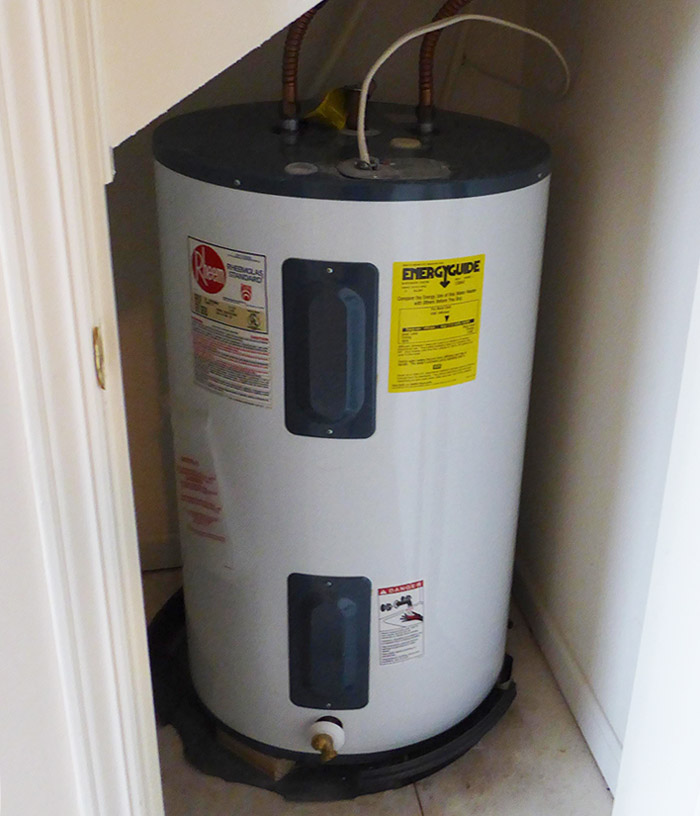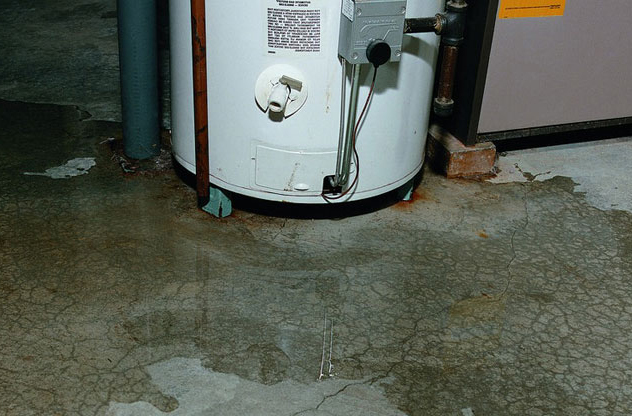Essential Steps for Residential Property Owners Managing Faulty Water Heaters
Essential Steps for Residential Property Owners Managing Faulty Water Heaters
Blog Article
What're your thoughts about How to Avoid a Broken Hot Water Heater?

Whether it lies in the cellar or a different space, damaged hot water heater can trigger stress and anxiety. A common device holds 80 gallons, so an over night leak will lead to a flood. This causes significant building damages with soaked wall surfaces as well as floorings. Besides, having no warm water supply is additionally troublesome. If you are handling these problems, make note of the following:
Call the Plumber
After doing the first 2 security actions, you should call your plumber to come right away to deal with a ruptured water heating system. There are usually indicators that your aging water heating system has sediment buildup in the interior.
Do not wait on major flooding to call the plumber. By then, you will certainly need to spend more to restore your building. Rather, as soon as you detect these signs, have an expert involved inspect your hot water heater tank. Typically, water heaters have a life expectancy of concerning 8 to 12 years. With normal inspection and maintenance, you can extend its life.
Cut Off the Cold Water Supply
Cut off the containers tap water supply from the source. When your storage tank is in excellent problem, the cool water stops loading up when the tank is complete. If you can not locate it or reach it, you must turn off that main water supply line outside your residential property.
Turn Off Power Source
Before calling the plumber, shut down a gas water heater by transforming the temperature level dial. This is typically located on top of the thermostat. Change off the circuit breaker if you have a model that runs on electric power. This will certainly protect against electrocution, especially if there is a leak as water is a conductor. Commonly, the heating element turns off when the water hits a particular temperature level. With a busted storage tank, it might malfunction. Sufficing off assures you stay risk-free.
Clean Up Home
After calling the plumber, record damages by remembering as well as photos so you can assert your homeowner's insurance. From there, start the immediate cleaning. Take out any type of crucial valuables to avoid further soaking. Remove any type of standing water to prevent mold as well as mildew development. If you have a completely submersible water pump, make use of that to drain pipes the water. Or else, the conventional bucket technique will certainly likewise work. Attempt to wipe out whatever, consisting of walls and also walls. If you have an electric fan as well as dehumidifier, maintain them going to maintain air flowing. This will aid discourage mold and mildew growth.
Bear in mind, if you discover any kind of issues with your water heater, call the pros today. You can not take this trouble gently because a faulty thermostat can increase water temp to a hazardously high level, resulting in unintentional burns. A broken heater stress safety valve can also cause a surge. For best outcomes, obtain a yearly check so your device obtains checked, cleaned up, drained, and re-filled, guaranteeing optimal performance.
After doing the initial 2 safety and security actions, you should call your plumber to come right away to take care of a fractured water heater. Instead, as soon as you identify these indicators, have a professional come to check your water heating unit container. Prior to calling the plumber, closed off a gas water heating unit by turning the temperature level dial. If you have a completely submersible water pump, utilize that to drain the water. Bear in mind, if you notice any issues with your water heater, call the pros right away.
8 REASONS YOUR HOT WATER HEATER IS NOT WORKING & HOW TO FIX
Water Heater Problems & Solutions
Loose or Damaged In-Line Valve
Unlike a water leak near the bottom of your water tank, a water leak on top of your system can be easily fixed. A common cause of water tank leaks includes a loose in-line valve. This is a handle that is located at the top of the water tank that is engineered to activate or deactivate the flow of water. To fix this problem, you will need to secure the nut that holds the ball or in-line valve in its location. If the leak becomes more severe once it is tightened, you will be required to travel to your local hardware store to purchase a new in-line valve for your water heater.
Damaged Pressure Relief Valve
Most types of water heaters are equipped with a pressure relief valve that is engineered to discharge pressure from the water tank when it becomes too high. If this valve on top of your water heater begins to leak, we recommend purchasing a new one online or from your local store. The process of removing and replacing pressure relief valves is not complicated.
No Warm Water
If you have an electric water heater in your home, the most typical cause of a lack of warm water is a broken heating element. Your water heater is equipped with two heating elements that are tasked with heating incoming water in the water tank. Once a heating element begins to malfunction, you will have little to no hot water to use for showering, cleaning, and laundry.
Low Supply of Hot Water
Are you continuously running out of warm water? This issue may be a byproduct of a cracked dip tube. This tube is engineered to push cold water to the base of your water tank to be heated. Once a crack or hole begins to form in the dip tube, the incoming supply of cold water may be released near the top or middle of your tank. As a result, the cold water on top of the tank will be sent to the faucets and showers in your house. This hot water heater problem can only be fixed by replacing the dip tube on your system. Since the process of installing a new dip tube is complex, we recommend calling a certified technician for help.
A low supply of warm water may also be a signal of excess sediment buildup in your water tank. As your water heater reaches the middle of its life cycle, minerals in water including magnesium and calcium will begin to collect at the base of the water tank. As the minerals continue to grow, there will be less room in the water tank to store hot water. To resolve this problem, flush your water heater to remove the excess minerals.
Water is Too Warm or Cold
If the water in your shower feels uncomfortable hot or cold, you can adjust the temperature of your water by changing the settings on your thermostat. Setting the temperature to 120 degrees Fahrenheit may help you save money on your utility bills. This is an excellent temperature to use if you’re worried about scalding or skin irritation. Does this temperature feel too cold? You may also adjust the thermostat to 140 degrees Fahrenheit to make your showers more pleasant. If your hot water heater is not working when you change the temperature, this is an indicator of a broken thermostat. Immediately find a certified plumbing or heating contractor in your area to repair or replace your thermostat.
Low Water Pressure
Low water pressure is not always caused by a malfunctioning water heater. If you live in an older home with smaller water pipes, the flow of water will be restricted prior to reaching our kitchen or bathroom skins. The only way to eliminate this hot water heater problem is to connect new ¾-inch water lines to your system. Another type of problem that may negatively impact your water pressure includes calcium deposits in water pipes.
As magnesium and calcium begin to form in your pipes, the diameter of your water lines will become smaller. As a result, the warm water from your water heater will not be able to travel in an efficient manner to your sinks or appliances. Since the process of replacing water pipes includes removing drywall, an average homeowner that does not have a plumbing license will not be able to fix this hot water heater problem.
https://www.wmhendersoninc.com/blog/8-reasons-your-water-heater-is-not-working-how-to-fix/

We are very drawn to Maintaining & Draining a Water Heater and I really hope you enjoyed reading the piece. Appreciated our posting? Please share it. Let other people discover it. I truly appreciate reading our article about How to Avoid a Broken Hot Water Heater.
Guaranteed satisfaction offered. Report this page